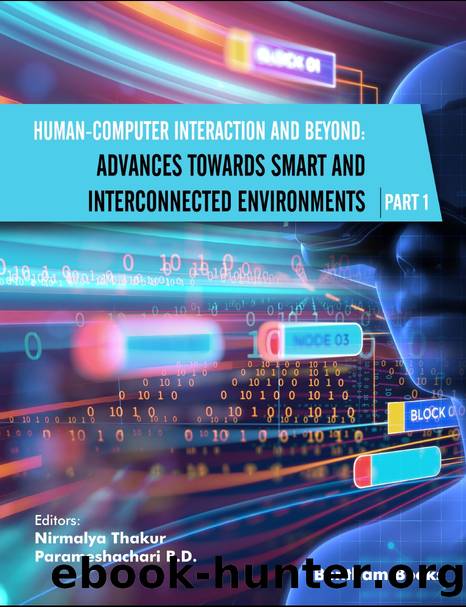Human-Computer Interaction and Beyond: Advances Towards Smart and Interconnected Environments (Part I) by Thakur Nirmalya;B.D. Parameshachari;

Author:Thakur, Nirmalya;B.D., Parameshachari;
Language: eng
Format: epub
Publisher: Bentham Science Publishers
Published: 2021-09-07T00:00:00+00:00
Gamification and User Experience (UX)
User experience applies to all forms of end-user engagement with an application or service such as the internet, computer programs, mobile apps, or online platforms [36-39]. As identified by [40], user experience has a personal aspect as it deals with the individualâs experience and perspective. Users will continue using an app or service if they are satisfied with the user experience and engagement. Ultimately, gamified learning platforms aim to enhance the student learning experience. This can result in improved attendance, engagement, proactiveness, and performance [41].
Literature in the education context shows online learning facilitates active learning, direct feedback, flexibility, study intensity, and easy access to resources [28, 29, 42]. However, if the user does not perceive the application or service as dynamic, challenging, satisfying, or enjoyable, this could negatively affect the user experience [43, 44]. Consequently, a negative user experience may be detrimental to motivation, participation, and continued usage intentions. Similarly, previous studies attest that technology significantly influences studentsâ behavior and their experiences [45]. Thus, it becomes critical to address usability issues throughout the game interface, mechanics, and gameplay [38, 46]. In brief, a successful gamification design enables users to connect with the interface and might encourage them to continue engaging with the system.
The literature shows a few empirical studies on various game elements implemented in the educational context. The results were unclear, making it difficult to conclude the efficacy of these interventions. Simultaneously, some studies show a positive impact of gamification on behavior and performance in the learning environment, while other studies reported negative or neutral effects [40, 41, 47, 48]. Hence, it becomes challenging to successfully deliver a game-based online learning intervention that utilizes user experience to improve student participation and academic performance. Accordingly, the research community needs to investigate further in this context.
Download
This site does not store any files on its server. We only index and link to content provided by other sites. Please contact the content providers to delete copyright contents if any and email us, we'll remove relevant links or contents immediately.
Exploring Deepfakes by Bryan Lyon and Matt Tora(8162)
Robo-Advisor with Python by Aki Ranin(8113)
Offensive Shellcode from Scratch by Rishalin Pillay(6326)
Microsoft 365 and SharePoint Online Cookbook by Gaurav Mahajan Sudeep Ghatak Nate Chamberlain Scott Brewster(5498)
Ego Is the Enemy by Ryan Holiday(5264)
Management Strategies for the Cloud Revolution: How Cloud Computing Is Transforming Business and Why You Can't Afford to Be Left Behind by Charles Babcock(4510)
Python for ArcGIS Pro by Silas Toms Bill Parker(4397)
Elevating React Web Development with Gatsby by Samuel Larsen-Disney(4121)
Machine Learning at Scale with H2O by Gregory Keys | David Whiting(4103)
Liar's Poker by Michael Lewis(3351)
Learning C# by Developing Games with Unity 2021 by Harrison Ferrone(3322)
Speed Up Your Python with Rust by Maxwell Flitton(3264)
OPNsense Beginner to Professional by Julio Cesar Bueno de Camargo(3237)
Extreme DAX by Michiel Rozema & Henk Vlootman(3222)
Agile Security Operations by Hinne Hettema(3151)
Linux Command Line and Shell Scripting Techniques by Vedran Dakic and Jasmin Redzepagic(3139)
Essential Cryptography for JavaScript Developers by Alessandro Segala(3108)
Cryptography Algorithms by Massimo Bertaccini(3045)
AI-Powered Commerce by Andy Pandharikar & Frederik Bussler(3013)
